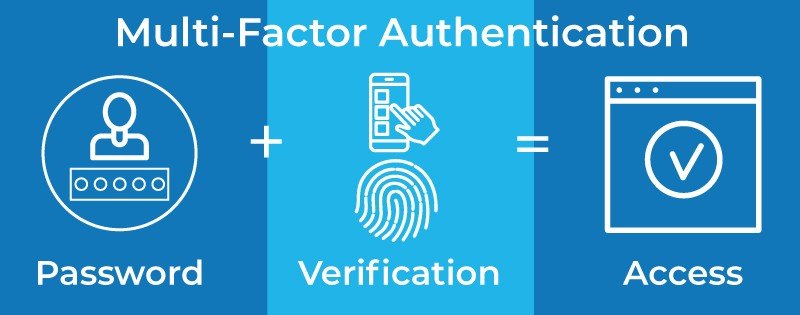As our digital landscape expands, the security protocols we rely on to protect our online interactions must evolve. Traditional password-based security systems are increasingly viewed as outdated and vulnerable. Passwordless multifactor authentication (MFA) emerges as a superior alternative, offering enhanced security without the cumbersome user experience of traditional passwords. This blog post delves into the mechanisms, benefits, and practical applications of passwordless MFA, providing insights into why it’s becoming an essential part of our cybersecurity toolkit.
Understanding Passwordless MFA
Passwordless MFA eliminates the need for traditional passwords, instead utilizing two or more verification factors to authenticate users. These factors are typically categorized into three groups:
- Something You Have: A device or a token, such as a smartphone or a hardware key.
- Something You Are: Biometric data like fingerprints, facial recognition, or retina scans.
- Something You Do: Actions such as gestures on a touchscreen or typing patterns.
This method ensures a higher level of security as it makes it significantly more difficult for unauthorized users to gain access by requiring multiple independent authentication factors.
The Mechanism Behind Passwordless MFA
- Enrollment: Users register their authentication factors with the system, which could involve scanning a fingerprint or synchronizing a device.
- Authentication Request: When access is needed, the system prompts the user to demonstrate one or more of the registered factors.
- Validation: The system verifies the factors against stored data, granting access only when all presented factors match.
This process reduces the reliance on memorized passwords, shifting towards more secure and personalized methods of verification.
Benefits of Adopting Passwordless MFA
Increased Security: By requiring multiple authentication factors, passwordless MFA minimizes the risk of account breaches, as attackers would need to compromise several independent factors simultaneously.
User Convenience: Users no longer need to remember complex passwords, which eliminates common frustrations and simplifies the login process.
Reduced Costs for Businesses: Organizations can save significantly on support costs related to password recovery and reset processes. Furthermore, enhanced security reduces the potential costs associated with data breaches.
Improved Compliance: Passwordless MFA helps organizations meet stringent regulatory requirements for data protection and privacy by providing robust security measures.
Implementation Strategies for Passwordless MFA
Implementing passwordless MFA requires careful planning and consideration of various factors, including user habits, system requirements, and security goals. Here’s a roadmap for organizations considering adopting passwordless MFA:
- Evaluate Needs: Analyze the security needs specific to your organization and identify the areas where passwordless MFA could be most beneficial.
- Select Suitable Technologies: Choose the appropriate technologies and devices for authentication, considering factors such as user accessibility and the sensitivity of the protected data.
- Partner with Reliable Vendors: Work with vendors that offer proven, secure solutions for passwordless MFA to ensure compatibility and support.
- Train and Support Users: Educate users on the new authentication methods to ensure smooth adoption and to minimize resistance due to unfamiliarity.
- Monitor and Adapt: Continuously monitor the system’s performance and user feedback to adapt the approach as needed to ensure optimal security and usability.
Challenges and Considerations
While passwordless MFA offers substantial benefits, there are challenges that organizations need to consider:
- Dependency on Devices: Users must have their authentication devices available at all times, which can be problematic if a device is lost or malfunctions.
- Privacy and Data Security: Handling biometric data requires strict data protection measures to prevent misuse and to comply with privacy laws.
- Technical Complexity: Transitioning from traditional systems to a passwordless environment can be technically challenging and requires robust IT support.
Case Studies of Passwordless MFA in Action
Financial Services: A major bank implemented passwordless MFA by allowing customers to use biometrics and mobile devices for authentication. This not only improved security but also enhanced customer satisfaction due to the ease of use.
Healthcare Sector: A healthcare provider adopted passwordless MFA to protect patient records, using staff biometrics and security tokens. This ensured compliance with health data protection regulations and significantly reduced unauthorized access incidents.
The Future of Passwordless MFA
The adoption of passwordless MFA is set to grow as more sectors recognize its benefits. Future developments may include:
- Advanced Biometrics: Technologies like heart rate or gait analysis could become new authentication factors.
- Integration with IoT: As the Internet of Things (IoT) expands, passwordless MFA could play a crucial role in securing interconnected devices.
- AI and Machine Learning: These technologies could enhance the detection of unusual behavior patterns, adding an additional layer of security to passwordless MFA systems.
Conclusion
Passwordless multifactor authentication represents a significant advancement in our approach to cybersecurity. By moving away from traditional passwords and embracing multifactor authentication, we can secure our digital identities more effectively. As technology advances, passwordless MFA is poised to become more integrated into our daily lives, offering both security and simplicity in the digital age.

